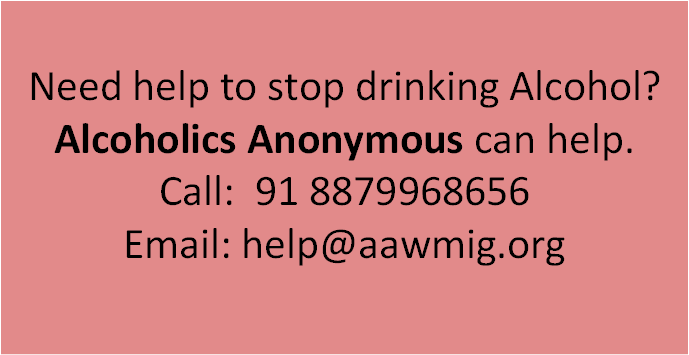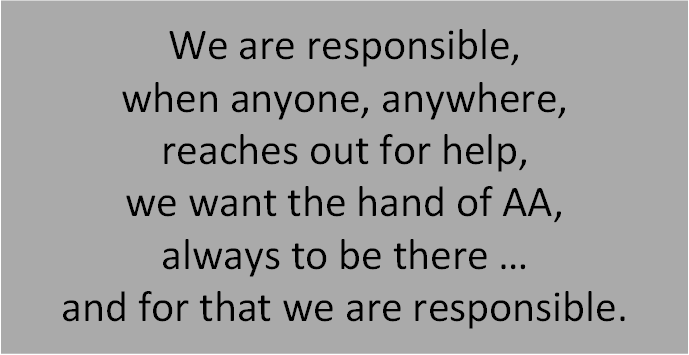Morphine, codeine, chloral hydrate, Luminal, Seconal, Nembutal, amytal, these and kindred drugs have killed many alcoholics. And I once nearly killed myself with choral hydrate. Nor is my own observation and experience unique, for many an old-time AA can speak with force and fervor on the subject of “goof balls.”
Excepting an infrequent suicide, nobody uses these drugs in the expectation of death. Tomany alcoholics, still in the drinking stage, they represent blessed relief from the agonies of a hangover.
Some of us, perfectly sober for months or years, contract the habit of using sedatives to cure insomnia or slight nervous irritability. I have the impression that some of us get away with it, too, year after year, just as we did when we first began to drink alcohol. Yet experience shows, all too often, that even the “controlled” pill-taker may get out of control. The same crazy rationalizations that once characterized his drinking begin to blight his existence. He thinks that if pills can cure insomnia so may they cure his worry.
Now a word about the use of morphine by physicians. Sometimes a general practitioner, not knowing his patient is already loaded with barbiturates, will give a morphine injection. A friend of mine died like that. Sober about three years, he got into an emotional jam. Pills led to alcohol and this combination to still more pills. His doctor found an excited heart. Out came the needle and a few hours later out went a very good friend. Another close friend, sober three years, also fell on evil days — pills and liquor. At the end of about three weeks of this diet he was placed one evening in a sanitarium. Nobody told the doctor there about the pills with which his system was already loaded. The patient was “eased” with a shot of codeine. Before daylight he was dead.
Near the end of my own drinking career I had an alarming experience. Chloral hydrate was prescribed for one of my terrible hangovers. The doctor warned me to stick rigidly to his dosage, but I kept possession of the bottle. While my wife slept quietly beside me, I reached under the mattress, took out the flask, and guzzled the whole business. I had a close shave. Moral: When a doctor gives a legitimate sedative prescription, don’t let the alcoholic have the bottle.
As a matter of fact, our friends the doctors are seldom directly to blame for the dire results we so often experience. It is much too easy for alcoholics to buy these dangerous drugs, and once possessed of them the drinker is likely to use them without any judgment whatever. Sometimes his well-meaning friends, unable to see him suffer, hand him pills themselves. It’s a very dangerous business.
It’s even dangerous to give a suffering alcoholic a drink if he is already loaded with pills. Years ago, I had an experience of this sort. We had an “alkie” in tow whom I shall call Slim. He finally had consented to go to a hospital. On the way he had a few — but only a small quantity compared to his customary capacity. Just before we reached the hospital, Slim’s speech suddenly go very thick and he passed out. I had to get a porter to help him to a cab. As he could usually manage a couple of bottles a day when active, I couldn’t understand this performance at all. Arrived at the hospital, Slim was still slumped in his seat and I couldn’t move him. Our good friend, Dr. Silkworth, came out and peered in the cab door. One look was apparently enough. Said he to me, “How is the man’s heart?” Confidently I replied, “He’s got a heart like an elephant. Told me so himself. But I don’t see how he got drunk so fast. I gave him very little liquor.” Out came the doctor’s stethoscope. Turning then to me, he said, “Not much use bringing this man in here. He can’t last long. What else has he been taking besides liquor?” Stunned, I replied, “Nothing, that I know of.”
Very gingerly an attendant carried Slim inside. Out came the stethoscope again. The doctor shook his head, saying, “This poor chap has been loaded with barbiturates for days. When you gave him alcohol, even a little, it fired off the accumulated charge of sedative he had in him. See how blue he is? His heart isn’t really working much. It’s just jittering. I can’t even count it.”
The doctor rushed to the phone and called Slim’s wife. To my horror she confirmed the fact that he had been taking heavy doses of amytal for about ten days. The doctor gently told her she had better hurry, else she might be too late. Then he called a famous heart specialist for consultation and told him to hurry too. They laid Slim on a bed upstairs. The great specialist came and drew out his stethoscope. At once he looked very serious and, motioning us out into the hall, he said he would leave a prescription but that he did not think my friend could possibly live through the night. Dr. Silkworth agreed.
During the proceedings I had been praying as I never had prayed before. After the two doctors had pronounced the death sentence on Slim, I told them of my prayers and explained, cheerfully as I could, that I had been reading Dr. Alexis Carrel’s book, Man the Unknown, in which prayer was described as effecting miraculous cures. The great specialist took his leave. Dr. Silkworth and I went downstairs to wait for the prescription to come in. A boy finally brought two capsules from the drugstore. The doctor looked at them, saying he hated to give them, they were so powerful. We went upstairs and as we stepped off the elevator we saw someone coming down the hall jauntily smoking a cigarette. “Hello, boys,” roared Slim, “what am I supposed to be doing in here?”
Never, so long as I live, shall I forget the relief and astonishment which spread over the doctor’s countenance as he quickly tested Slim’s heart. Looking at me, he said, “This man’s heart is now normal. Fifteen minutes ago I couldn’t count it. I thought I knew these alcoholic hearts pretty well. But I’ve never seen anything like this — never. I can’t understand it.” What miracle saved Slim, no one can say. He left the hospital in a few days, without ill effects from his experience.
As for me — well, I guess I learned my lesson then and there. No more “goof balls” unless the doctor says so — not for me. No, thank you!
Copyright © The A.A. Grapevine, Inc., November 1945 Reprinted with permission




